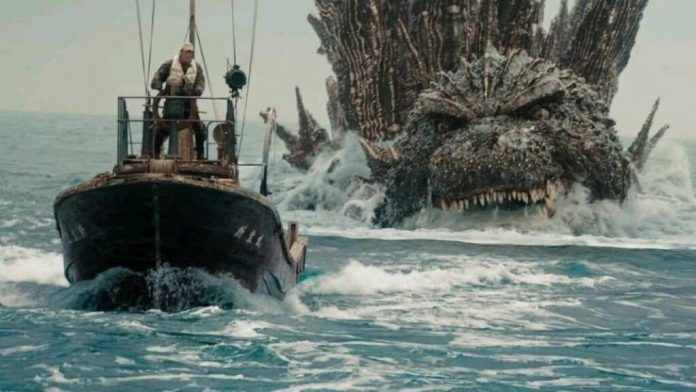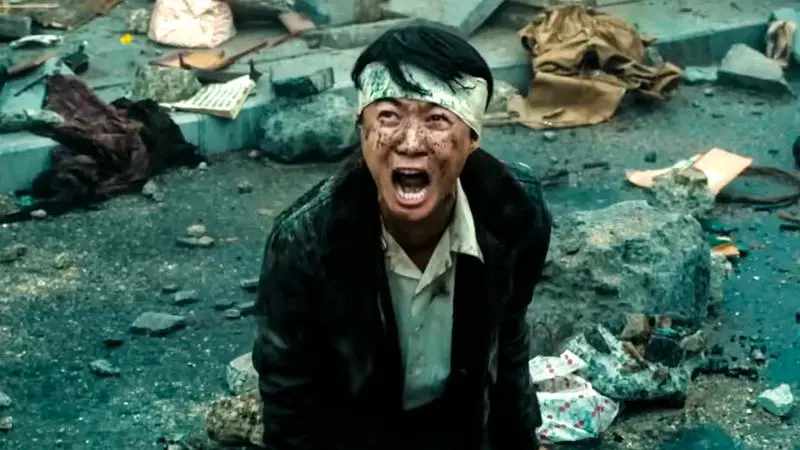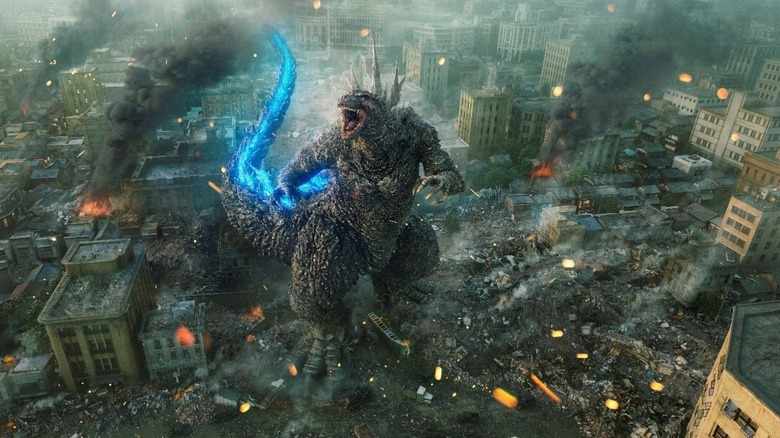In the vast realm of kaiju film, Toho Studios has unleashed the legendary Godzilla once more with their most recent film, “Godzilla Minus One.” This Japanese film, which is directed by the gifted Takashi Yamazaki, transports viewers to the legendary monster’s stories of the 20th century and takes them on an exciting adventure. In contrast to its Hollywood equivalent, Legendary Pictures’ MonsterVerse, “Godzilla Minus One” is a standalone story that offers a novel viewpoint on the timeless and magnificent Godzilla.
As tvacute explors the nuances of this visual extravaganza, it’s critical to realize that “Godzilla Minus One” deviates from the Hollywood MonsterVerse franchise’s path. Instead, it creates a distinct plot around Kōichi Shikishima (Ryunosuke Kamiki) , a kamikaze pilot whose destiny is entwined with that of Godzilla. Two years after surviving a terrifying confrontation at the close of World War II, Kōichi is faced with the terrible giant once more. This establishes the framework for an epic conflict with a plot full of suspense, action, and surprising turns.
Godzilla Minus One Movie Plot
“Godzilla Minus One”‘s compelling story, expertly conceived by director Takashi Yamazaki, is its core. The story begins in 1945, when World War II is coming-to-an-end, with kamikaze pilot Kōichi Shikishima landing on Odo Island. Godzilla, a monster that resembles a dinosaur, breaks out on the island and causes havoc, leaving Kōichi and another survivor, Sōsaku Tachibana, to deal with the fallout.
Two years later, post-war Tokyo serves as the setting for Kōichi’s battle with survivor’s guilt. In a heartbreaking turn of events, Godzilla becomes a monstrous force that is headed directly toward Japan as a result of U.S. nuclear experiments at Bikini Atoll. Now working aboard the Shinsei Maru, Kōichi partners up with a former weapon engineer Kenji Noda (Hidetaka Yoshioka) to halt Godzilla’s impending destruction after the U.S. declines to help owing to geopolitical concerns.
The filmmakers showcase the imaginative layers of the plot by deftly developing a multi-layered scheme to destroy Godzilla. Godzilla is to be submerged in the ocean and crushed by pressure, therefore Kenji’s plan is to burst the freon tanks that are attached to it. Another, almost as crazy, involves forcing Godzilla back to the surface by blowing up balloons packed with carbon dioxide, which will cause a catastrophic decompression.
But as things work out, Godzilla shows himself to be strong. The goal of dragging the monster down to 1,500 meters is not achieved, and the struggle that follows demonstrates the monster’s immense might. Godzilla finally yields to a daring maneuver made by Kōichi, who pilots a prototype fighter plane into its mouth. Viewers are gripped by the suspense of this pivotal confrontation, and Kōichi’s seeming self-sacrifice lends poignancy to the story.
Godzilla Minus One Movie: Ending!
In a dramatic and audacious scene toward the climax of “Godzilla Minus One,” Godzilla meets its demise. The protagonist, Kōichi Shikishima, takes matters into his own hands to put an end to the monster’s reign of destruction as the monstrous creature wreaks havoc over Tokyo.
Kōichi daringly flies a Kyushu J7W Shinden fighter plane prototype right into Godzilla’s jaws. The idea is to kill the monster within, which is a dangerous and self-sacrificing deed. Kōichi expertly moves the plane to cause Godzilla’s trademark atomic breath to overflow as the beast charges it.
As Godzilla’s head is shattered and its atomic breath becomes uncontrollable, it obliterates the remainder of its body in a stunning and cataclysmic finale. The final moments of the epic conflict between man and monster are made unforgettable and compelling by Kōichi’s bravery and sacrifice, which give the climax emotional weight. The story takes a surprising turn, though, when Kōichi manages to escape the plane just in time, and escapes.
Does Godzilla Die at the End of Godzilla Minus One? Explained!
Whether Godzilla dies in the “Godzilla Minus One” conclusion is the key question that spectators are left wondering. The filmmakers masterfully craft a scene in which Kōichi, as if sacrificing himself, flies his jet straight into Godzilla’s mouth, overwhelming its nuclear breath and, presumably, putting a stop to the monster’s destructive rampage.
But the story takes a sudden turn when Kōichi escapes the plane just in time and survives in a remarkable way. The spectator is given a sense of relief when this shift questions preconceived notions about bravery and selflessness. This moment has a strong emotional resonance as the crew applauds and salutes Kōichi, thinking he has made the ultimate sacrifice.
As the narrative progresses after the battle, Kōichi meets up with his loved ones again, including Noriko (Minami Hamabe), who managed to escape Godzilla’s previous attack on Tokyo. However, the seeming triumph is short-lived because Godzilla’s regenerating powers are activated when a piece of its flesh drops to the ocean floor. Godzilla’s future is now tantalizingly unclear due to this unforeseen turn of events, which may lead to potential sequels.
Within the grand heritage of kaiju film, Godzilla’s tenacity serves as a metaphorical element. The monster’s capacity for regeneration is a reflection of its lasting influence on the world of giants in film. This narrative decision keeps viewers on the edge of their seats long after the credits have rolled since it not only gives the character more dimension but also creates possibilities for more stories.
In addition to being a monster movie, “Godzilla Minus One” proves Godzilla’s continuing appeal in international film. A complex story and the direction of Takashi Yamazaki create a cinematic experience that goes beyond the usual kaiju story. The picture defies traditional clichés, as demonstrated by Kōichi’s survival and Godzilla’s rebirth, which keeps viewers guessing and engrossed in what will happen to these enormous characters.
The possibility of sequels looms large as we traverse the fallout from Godzilla’s catastrophic rampage and Kōichi’s selfless sacrifice. Godzilla’s ability to regenerate itself suggests a comeback and calls for more conflicts and hidden tales. Even though “Godzilla Minus One” ends its story without any mid- or post-credits scenes, Yamazaki’s creative contributions open the door to a cinematic world that may delve further into Godzilla’s legacy.
In summary, “Godzilla Minus One” advances the genre into unexplored territory while also honoring the rich tradition of kaiju cinema. One thing is certain, regardless of whether Godzilla’s destructive rule is officially over or is only on hold: the monster’s enormous cinematic legacy lives on, offering up more epic stories in the world of kaiju lore.




